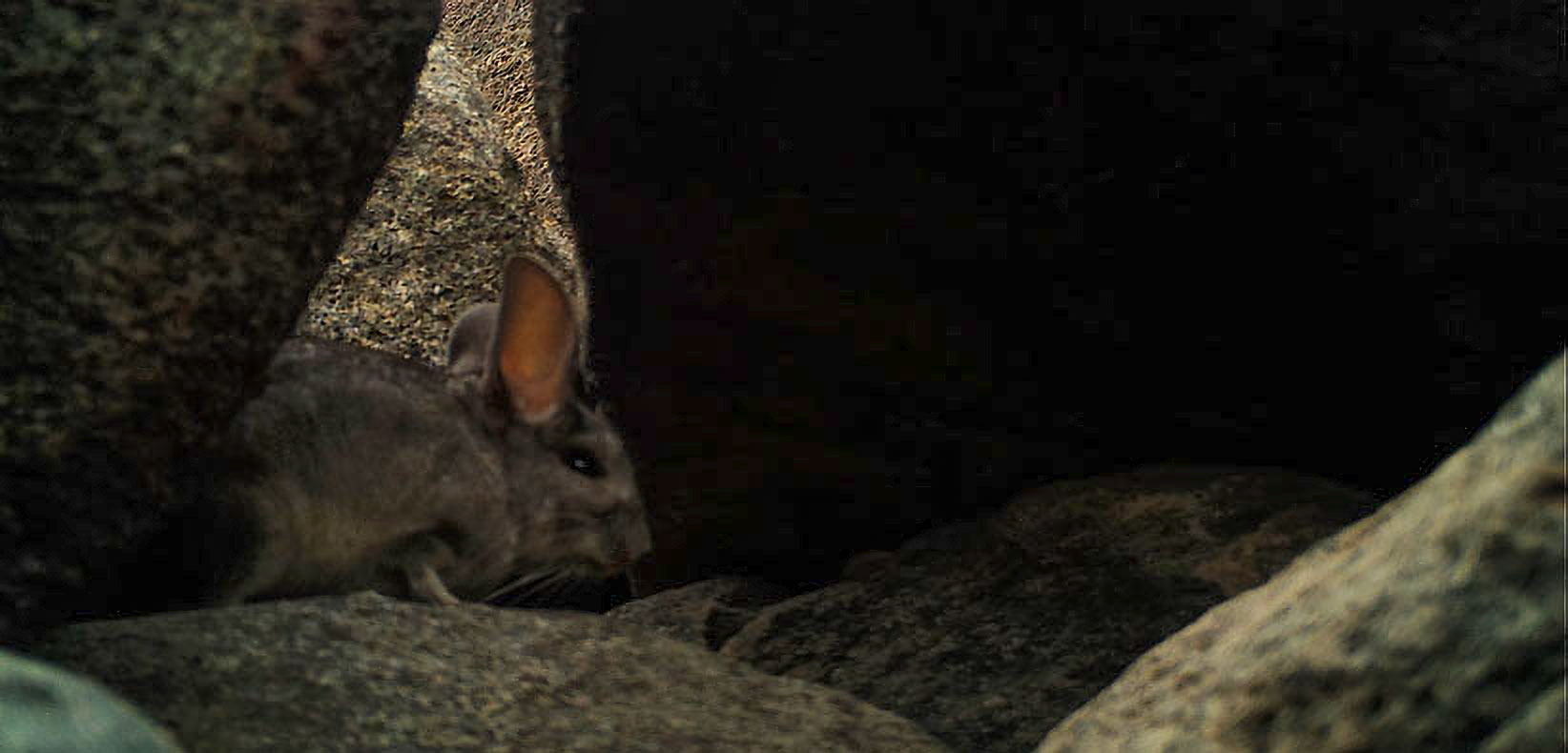In Chile, an Unknown Coastal Chinchilla
Whether a new subspecies, a species, or just a new population, these coastal chinchillas act in ways scientists have never seen before.
Article body copy
In 2020, on a rocky hillside overlooking the vast swell of the Pacific Ocean near the Chilean port city of Antofagasta, a local man out walking his dog stumbled upon the sun-bleached skull of a small mammal. Curious, he pocketed it and brought it to the attention of researchers Alejandro Peñaloza and Jaime Jiménez. The scientists were shocked. The skull belonged to a long-tailed chinchilla, a species typically found deep within the Chilean Andes Mountains. As far as scientists knew, chinchillas had never inhabited the coast.
“I couldn’t believe it at first,” says Jiménez, a researcher at the University of North Texas who has studied chinchilla ecology for over 30 years. “There were no past records of chinchillas in the area, and never on the coast, so it just didn’t make any sense.”
The excited researchers dug into the mystery. They quickly discovered a plethora of pint-sized paw prints in the sand and rodent scat strewn among the boulders, but what they really wanted was photographic evidence. The researchers baited camera traps with apple slices and, to their delight, captured dozens of images of the rodents. It was only when the scientists checked the cameras that they realized just how close they’d come to seeing the chinchillas—one image was snapped just 11 minutes after they’d left.
The footage shows that the coastal chinchillas are strikingly different from their Andean counterparts. As the scientists detail in a recent report, while the mountain chinchillas are larger with thick fur and rounded ears, the coastal chinchillas have smaller bodies, sleeker fur, and unusually elongated rabbit-like ears. Aside from their peculiar looks, the coastal chinchillas were also captured moving about in the daytime—a behavior never before seen in wild chinchillas.
“These animals are usually completely nocturnal, so it may be a sign of fewer predators or an adaptation to their environment,” says Jiménez.
The revelation that long-tailed chinchillas are inhabiting the coast is challenging scientists’ long-held assumptions about how these animals live. For one thing, says Fabian Jaksik, a member of the Chilean Academy of Sciences who was not directly involved in the research, the find “is significant because it’s the northernmost record of the long-tailed chinchilla in Chile ever, even historically speaking.”

The skull that led to the discovery of a coastal chinchilla population in Chile. Photo by Alejandro Peñaloza
The environment where the coastal chinchillas reside is also a world apart from the harsh and frigid deserts of the Andes. Sandwiched between the Atacama Desert and the Pacific Ocean, life flourishes along the coastal margin thanks to the proximity of the sea and its moderating effect on daily temperatures. A thick fog known as the camanchaca frequently rolls in on morning easterly winds and nourishes the region’s plants.
For researchers striving to learn more about these novel animals, however, even their palate is puzzling.
While the Andean chinchillas mainly eat grass, scientists aren’t quite sure what the coastal chinchillas eat. The hillsides they inhabit are absent of grasses but rich in flora that is either highly toxic or studded with spines and thorns. “It could be that they are eating something completely new or nibbling on a bit of everything and somehow digesting and surviving the toxins,” says Jiménez. “But this is just a hypothesis.”
With so many differences in appearance, behavior, and ecology, scientists aren’t quite sure what to make of these chinchillas. “The coastal chinchillas might be a subspecies or maybe even a new species,” says Jiménez. “We’ll only be able to answer these questions after we’ve understood these animals and their lives better.”
Beyond their enigmatic ecology, the coastal chinchillas are raising wider questions about the species’ future.
While Andean long-tailed chinchillas are still recovering from centuries of overhunting and face ongoing threats from habitat destruction for mining, the coastal chinchillas seem to be thriving. If they are the same species, the new population suggests long-tailed chinchillas are more abundant than previously thought, offering hope for their survival in the wild.
“This is probably a population that escaped overhunting due to its isolation,” says Peñaloza. “So there may be lots more out there waiting to be found.”

